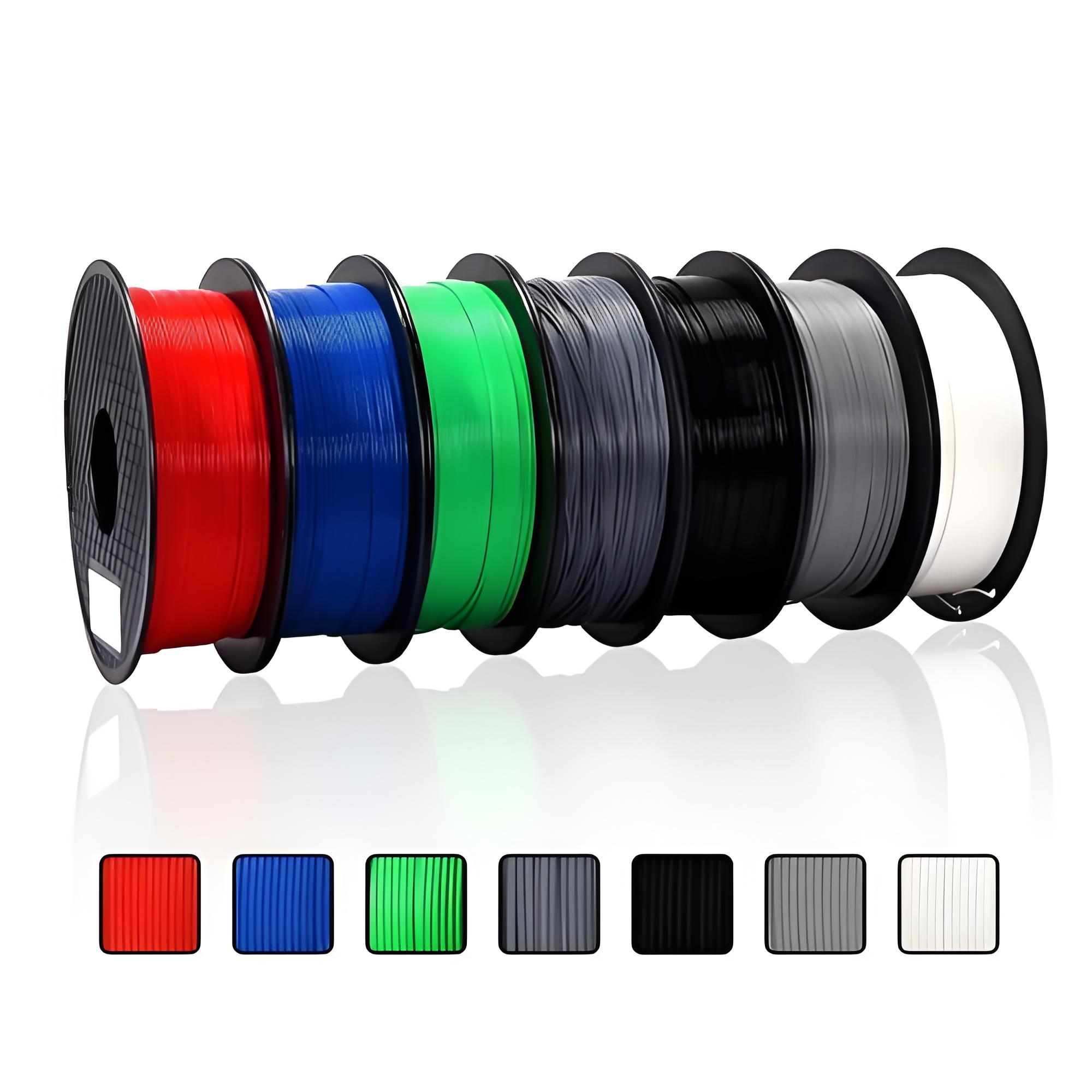PLA (Polylactic Acid) filament is the most popular 3D printing material, cherished for its ease of use, eco-friendliness, and versatility. Derived from renewable resources like corn starch or sugarcane, it stands out as a biodegradable alternative to petroleum-based plastics, making it a favorite among hobbyists, educators, and beginners.
One of PLA’s biggest advantages is its user-friendly nature. It has a low melting point (180–220°C), requiring minimal printer calibration. Unlike ABS, it rarely warps, eliminating the need for heated build plates (though some users opt for mild heating around 40–60°C to enhance adhesion). This makes it ideal for entry-level 3D printers and first-time users, reducing frustration from failed prints.
PLA boasts excellent print quality, producing smooth, detailed layers with crisp edges. It comes in a vast array of colors, finishes, and specialties—from matte and glossy to metallic, glow-in-the-dark, and even scented variants. This diversity makes it perfect for decorative items, prototypes, figurines, and educational models where aesthetics matter.
In terms of mechanical properties, PLA offers moderate strength and rigidity, suitable for non-functional parts, art, and lightweight prototypes. However, it has limitations: it’s less impact-resistant than ABS or PETG and softens at relatively low temperatures (around 60°C), making it unsuitable for parts exposed to heat or stress.
PLA requires minimal post-processing. It sands easily to achieve a polished surface and accepts paints, glues, and dyes well. Since it doesn’t emit strong fumes during printing, it’s safe for indoor use without specialized ventilation, a major plus for home or classroom settings.
Storage is straightforward compared to other filaments. While it absorbs some moisture, it’s far less hygroscopic than ABS or PETG, reducing the need for airtight containers—though keeping it dry still improves print consistency.
In summary,
PLA Filament’s combination of ease of use, eco-friendliness, and versatility makes it the starting point for most 3D printing journeys. Its accessibility, vibrant options, and reliable performance make it indispensable for creative projects, educational use, and anyone looking to explore 3D printing without technical hurdles.



